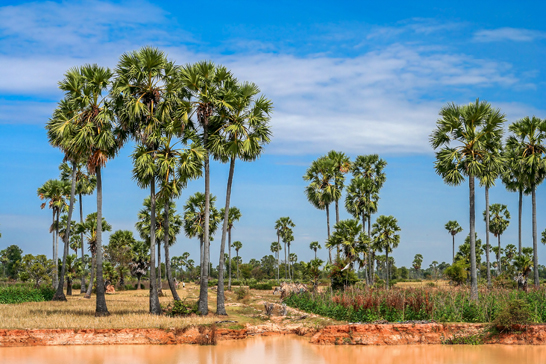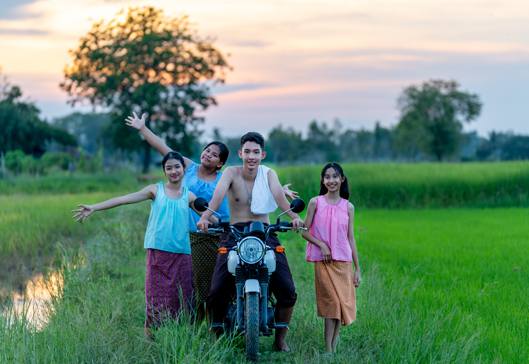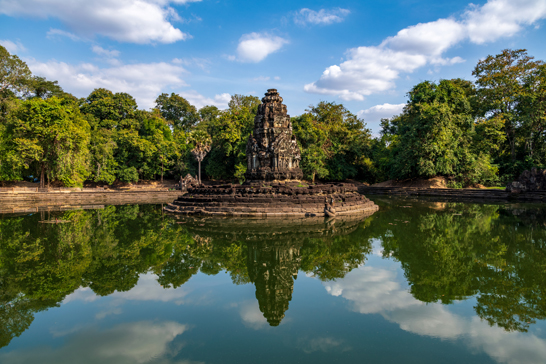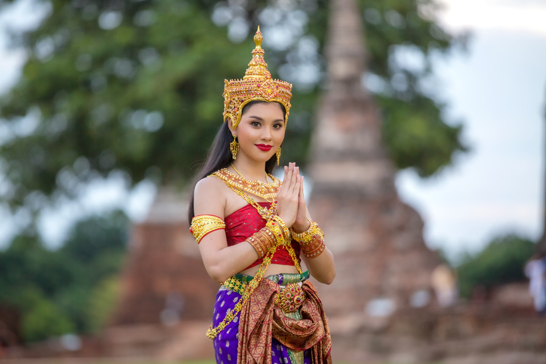Planning your next adventure? Cambodia travel offers experiences that sound too extraordinary to be true – but they absolutely are. From rivers that flow backwards twice a year to entire cities floating on water, this Southeast Asian gem delivers surprises at every turn.
Whether you’re considering living in Cambodia or planning your first visit, this comprehensive guide reveals ten incredible facts that showcase why Cambodia has become one of Asia’s most captivating destinations. Get ready to discover a country where ancient wonders meet modern affordability, and genuine hospitality creates memories that last a lifetime.
1. The World’s Only River That Flows Backwards

The Tonlé Sap’s Miraculous Reversal
Cambodia is home to nature’s most extraordinary phenomenon: the Tonlé Sap River, the only river in the world that completely reverses its flow twice yearly. This isn’t just a minor current change – it’s a dramatic transformation that defines Cambodia’s natural rhythm.
How the Reversal Works:
- During dry season: Water flows normally from Tonlé Sap Lake to the Mekong River
- During rainy season (June-October): Massive Mekong flooding forces the river to flow backwards
- The lake expands from 1,000 to 4,500 square miles – nearly five times its normal size
This phenomenon is so significant that Cambodians celebrate it annually during the Water Festival in Phnom Penh each November. The festival features thrilling boat races and draws thousands of spectators to the riverside, making it an ideal time for Cambodia travel enthusiasts to experience local culture.
Historical Significance
The Tonlé Sap’s reversal has been the lifeblood of Cambodian civilization for over 1,000 years. The rich sediment deposited during floods created the fertile conditions that made the mighty Khmer Empire possible, supporting cities like Angkor that housed over one million people.
2. Floating Villages: Cities That Rise and Fall
Life on the Water
Cambodia travel reveals one of the world’s most ingenious living situations: 80,000 people permanently residing on Tonlé Sap Lake in approximately 170 floating villages. These aren’t simple houseboats – they’re complete communities with infrastructure that adapts to changing water levels.
What You’ll Find in Floating Villages:
- Floating schools and hospitals
- Supermarkets and karaoke bars
- Basketball courts and orphanages
- Fish wholesalers and restaurants
Chong Kneas: A Case Study
The village of Chong Kneas exemplifies this floating lifestyle:
- 3 floating restaurants
- 5 schools
- 7 fish wholesalers
- 4 karaoke bars
Community Demographics: The residents represent a blend of Vietnamese, Cham, and Khmer ethnic groups. While classified as stateless people, they’ve created one of the world’s most remarkable communities. Life is challenging – fishermen spend weeks on the lake, and life expectancy averages 54 years – but their resilience is extraordinary.
3. The Krama: Cambodia’s Ultimate Multi-Tool
More Than Just a Scarf
Long before Swiss Army knives existed, Cambodians perfected the ultimate multi-purpose accessory. The krama scarf, dating back over 1,500 years, serves more functions than any single garment should logically handle.
Krama Uses Include:
- Traditional scarf and belt
- Baby hammock and blanket
- Towel and face mask
- Rope and bandana
- Weapon in martial arts
- Dodgeball for children
- Bicycle tire repair tool
- Carrying bag for vegetables and livestock
Cultural Significance
Cambodia is the only Southeast Asian country where everyone wears scarves. The traditional checkered cotton patterns come in red/white or blue/white, though many avoid red versions due to Khmer Rouge associations. The krama represents Cambodian ingenuity and has been their faithful companion through centuries of challenges.
4. Living in Cambodia: Luxury on a Shoestring Budget
Cost of Living Breakdown
Living in Cambodia offers one of the world’s lowest costs while maintaining surprisingly high quality of life. For Western retirees and digital nomads, it’s possible to live luxuriously on what would be a modest budget back home.
Monthly Living Costs:
- Restaurant meals: $3-5
- Cappuccino: $1.50
- One-bedroom apartment (central Phnom Penh): $250-400
- Utilities (electricity, water, internet, gas): $40-60
- Bus/metro tickets: $0.15-0.20
- Taxi across city: Under $4
- Mobile internet: $1 per gigabyte
- Draft beer at bars: $0.50
Total Monthly Budget: Many expats live comfortably on $500-700 per month, including rent, food, and entertainment. This makes Cambodia an increasingly popular destination for those seeking affordable international living.
5. Balloon Adventures Over Angkor Wat
Unique Perspective on Ancient Wonders
Cambodia travel offers an experience few people know exists: hot air balloon rides over the world’s largest religious monument. Located just 800 meters from Angkor Wat, the Angkor Balloon provides breathtaking aerial views of the temple complex.
Balloon Experience Details:
- Operated by French company Aérophile since 2003
- Tethered helium balloon ascending to 120 meters
- 10-15 minute rides with 360-degree views
- Daily operation from sunrise to sunset (weather permitting)
- Cost: Just $20 for adults
What You’ll See: From this vantage point, visitors can appreciate the true scale of Angkor Archaeological Park, which spans 250 square miles. Clear days offer views of Angkor Wat, Phnom Bakheng, West Baray, and the distant Tonlé Sap Lake.
6. Tonlé Sap: The Lake That Feeds a Nation

Biological Goldmine
The Tonlé Sap Lake represents far more than Cambodia’s largest body of water – it’s a biological goldmine supporting over 3 million people and providing 75% of Cambodia’s annual inland fish catch.
Lake Statistics:
- Over 220 different fish species
- Ranked 4th globally for fish productivity and biodiversity
- Supports average Cambodian consumption of 75kg fish per year
- Provides 60% of total protein intake for Cambodians
The “Money Fish” Economy
Tiny fish called trey riel (“money fish”) form the backbone of Cambodian nutrition. These fish are fermented into prahok, a protein-packed paste that’s a staple in Cambodian cooking. The lake’s productivity stems from its unique flooding cycle, which inundates surrounding forests and creates nutrient-rich breeding grounds.
7. Hidden Temple Treasures Beyond Angkor Wat

Cambodia’s Archaeological Wealth
While Angkor Wat attracts millions of visitors, Cambodia actually contains over 4,000 ancient temple sites scattered across the country. The Angkor Archaeological Park alone houses over 100 significant temples, but most tourists only visit the famous few.
Hidden Temple Gems:
- Beng Mealea: Completely overgrown by jungle, offering adventure-style exploration
- Banteay Srei: Pink sandstone masterpiece with intricate carvings
- Preah Vihear: Dramatic clifftop temple with panoramic views
Construction Marvel
The temple-building period lasted over 600 years (9th-15th centuries), during which the Khmer Empire constructed more religious monuments than any civilization in history. Angkor Wat alone required an estimated 300,000 workers and 6,000 elephants to transport massive sandstone blocks.
Modern Discoveries: Archaeologists continue discovering new temple sites using satellite technology, meaning Cambodia travel could include genuinely undiscovered ancient wonders.
8. Remarkable Recovery: From Tragedy to 99% Literacy
Against All Odds
Cambodia’s most mind-blowing fact showcases incredible resilience: despite losing most of its educated population during the devastating Khmer Rouge period (1975-1979), Cambodia has achieved a remarkable 99% literacy rate – matching many developed nations.
The Transformation
During the Khmer Rouge regime, intellectuals, teachers, and anyone wearing glasses (considered a sign of education) were targeted for elimination. The country had to rebuild its entire educational system from scratch.
Modern Cambodia:
- Phnom Penh has become a bustling hub of commerce and culture
- Modern shopping centers and international schools
- Vibrant café scene and cultural renaissance
- Complete educational system reconstruction
This transformation from one of history’s darkest chapters to universal literacy in just decades represents one of the most remarkable recoveries in human history.
9. The Youth Revolution: Where Young People Rule
Demographic Advantage
Cambodia boasts one of the world’s youngest populations – over 65% of its 17 million people are under 30 years old. This demographic boom is reshaping the country in fascinating ways.
Youth Impact:
- Young entrepreneurs starting innovative businesses
- Students crowding modern coffee shops with laptops
- Vibrant social media culture rivaling Western cities
- Excellent English proficiency and tech-savvy population
Economic Growth
This youthful energy drives rapid economic development:
- GDP increasing by average 7% annually over the past decade
- Heavy government investment in technology infrastructure
- Positioning as Southeast Asia’s rising economic star
- Emerging hub for digital nomads and international businesses
For Cambodia travel, this means experiencing a country that’s simultaneously ancient and ultra-modern, where centuries-old temples stand alongside bustling tech startups.
10. The Kingdom of Genuine Smiles

Authentic Hospitality
Despite enduring some of the 20th century’s greatest hardships, Cambodia is universally known for the genuine warmth and hospitality of its people. This isn’t marketing – it’s a cultural characteristic so pronounced that visitors consistently rank Cambodian hospitality among the world’s best.
Cultural Foundation
What Creates This Warmth:
- Khmer concept of “face” and social harmony
- Natural tendency to avoid conflict and welcome others
- Traditional Buddhist values emphasizing forgiveness and community
- Cultural healing from traumatic past through positivity
Cultural Renaissance
Cambodia is experiencing a revival in traditional arts:
- Ancient silk weaving techniques
- Traditional stone carving
- Silversmithing crafts
- Passionate young artisans leading the revival
This infectious optimism, combined with incredible affordability, rich history, and stunning natural beauty, explains why Cambodia travel and living in Cambodia are becoming increasingly popular with adventurous souls seeking authentic Southeast Asian experiences.
Frequently Asked Questions
Is Cambodia safe for travelers?
Cambodia is generally safe for tourists, with standard precautions recommended. Petty theft can occur in tourist areas, but violent crime against foreigners is rare. The country has developed a robust tourism infrastructure, particularly around major attractions like Angkor Wat and in Phnom Penh.
What’s the best time to visit Cambodia?
The ideal time for Cambodia travel is during the dry season (November to April) when temperatures are cooler and rainfall is minimal. However, the rainy season (May to October) offers lush landscapes and the spectacular Tonlé Sap river reversal.
Do I need a visa for Cambodia?
Most nationalities can obtain a visa on arrival or e-visa for Cambodia. Tourist visas are typically valid for 30 days and cost around $30-36. Check current requirements with the Cambodian embassy or consulate in your country.
Can foreigners buy property in Cambodia?
Foreigners cannot own land in Cambodia but can own condominiums above the first floor in buildings where Cambodians own at least 70% of the units. Many expats choose long-term leases or establish Cambodian companies for property ownership.
What language is spoken in Cambodia?
Khmer is the official language, but English is widely spoken in tourist areas, hotels, and restaurants. French is also understood by older generations due to Cambodia’s colonial history.
How much does it cost to live in Cambodia?
Living in Cambodia can cost as little as $500-700 per month for a comfortable lifestyle, including accommodation, food, and entertainment. Costs vary significantly between rural areas and major cities like Phnom Penh and Siem Reap.
Your Cambodia Adventure Awaits
Cambodia offers far more than most travelers realize. From floating villages and reversing rivers to ancient balloon rides and ultra-affordable living costs, this remarkable kingdom continues to surprise and delight visitors from around the world.
Whether you’re planning your first Cambodia travel adventure or considering living in Cambodia long-term, this fascinating country promises experiences you’ll never forget. The combination of ancient wonders, natural phenomena, genuine hospitality, and incredible affordability creates a destination that delivers both adventure and value.
Ready to explore Cambodia? Start planning your journey to one of Southeast Asia’s most captivating destinations. With direct flights available from major cities worldwide and visa-on-arrival options for most nationalities, your Cambodian adventure is just a booking away.


